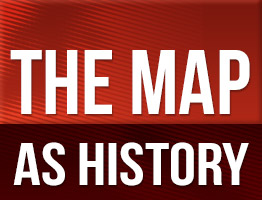

Toward the end of the meeting, the American delegation received word that Manhattan Project scientists had successfully tested an atomic bomb. 4Īt the Potsdam Conference, held on the outskirts of Berlin from mid-July to early August, the Allies debated the fate of Soviet-occupied Poland. He committed the United States to a hard-line, anti-Soviet approach. Although Roosevelt was skeptical of Stalin, he always held out hope that the Soviets could be brought into the “Free World.” Truman, like Churchill, had no such illusions. The political landscape was altered drastically by Franklin Roosevelt’s sudden death in April 1945, just days before the inaugural meeting of the UN. Suspicion and mistrust were already mounting. At the same time, deliberation began over reparations, tribunals, and the nature of an occupation regime that would initially be divided into American, British, French, and Soviet zones. With Germany’s defeat imminent, the Allies set terms for unconditional surrender.

Stalin considered the newly conquered territory part of a Soviet sphere of influence. The Germans had pillaged their way across Eastern Europe, and the Soviets had pillaged their way back. The Cold War grew out of a failure to achieve a durable settlement among leaders from the Big Three Allies-the United States, Britain, and the Soviet Union-as they met at Yalta in Russian Crimea and at Potsdam in occupied Germany to shape the postwar order. Political, Economic, and Military Dimensions The Cold War reshaped the world and the generations of Americans that lived under its shadow. Tensions ran highest, perhaps, during the first Cold War, which lasted from the mid-1940s through the mid-1960s, after which followed a period of relaxed tensions and increased communication and cooperation, known by the French term détente, until the second Cold War interceded from roughly 1979 until the collapse of the Berlin Wall in 1989 and the dissolution of the Soviet Union in 1991. “Cold” because it was never a “hot,” direct shooting war between the United States and the Soviet Union, the generations-long, multifaceted rivalry nevertheless bent the world to its whims. The Cold War was a global political and ideological struggle between capitalist and communist countries, particularly between the two surviving superpowers of the postwar world: the United States and the Union of Soviet Socialist Republics (USSR). is more dangerous and insidious than ever before.” 1 There could be no cooperation between the United States and the Soviet Union, Kennan wrote. Instead, the Soviets had to be “contained.” Less than two weeks later, on March 5, former British prime minister Winston Churchill visited President Harry Truman in his home state of Missouri and declared that Europe had been cut in half, divided by an “iron curtain” that had “descended across the Continent.” 2 Aggressive anti-Soviet sentiment seized the American government and soon the American people. “World communism is like a malignant parasite which feeds only on diseased tissue,” he wrote, and “the steady advance of uneasy Russian nationalism. embassy in Moscow, George Kennan sent a famously lengthy telegram-literally referred to as the Long Telegram-to the State Department denouncing the Soviet Union. On February 22, 1946, less than a year after the end of the war, the chargé d’affaires of the U.S. Relations between the United States and the Soviet Union-erstwhile allies-soured soon after World War II.

Decolonization and the Global Reach of the ‘American Century’ The Cold War Red Scare, McCarthyism, and Liberal Anti-Communism The Arms Buildup, the Space Race, and Technological Advancement


 0 kommentar(er)
0 kommentar(er)
